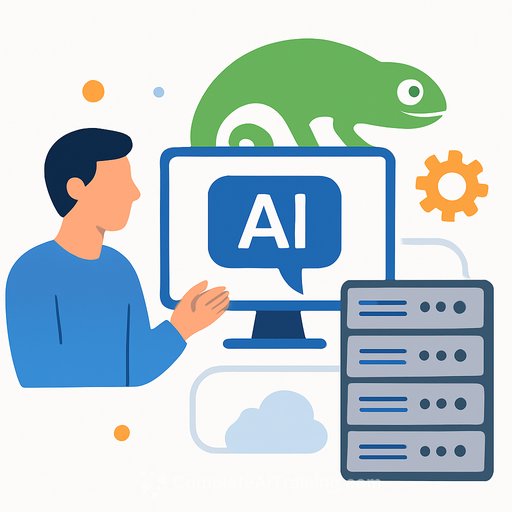Global insurers are racing to put agentic AI at the core of operations
Agentic AI has moved past demos. These systems can reason, take action, and make decisions in real time with minimal human input. For operations leaders, the question is no longer if, but where to deploy, how fast to scale, and how to run them safely day after day.
The stakes are clear: the choices you make in the next 6-12 months will influence distribution, underwriting, claims, and customer service for years.
From pilots to customer-facing reality
Insurtechs like Kanopi in Australia are already putting agents in front of customers, including live conversations. Traditional carriers are following. The lesson: learn from early movers or risk ceding speed and flexibility to competitors who iterate faster.
Some of the largest players are now live. Allianz has launched Project Nemo in Australia to streamline food spoilage claims and is building a global ecosystem of specialized agents that work alongside experts. Recent analysis suggests that scaling agentic AI for dynamic workflows can drive 20-30% productivity gains. The business case is strong.
Opportunity beats threat-if you act with intent
Tim Kane, head of retail at Zurich Australia & New Zealand, is direct about the operational reality: act now, and be deliberate about where agents sit in the stack and how they change distribution and team workflows. The risk isn't just being late to AI-it's losing distribution flexibility to competitors, old or new.
His point: this isn't a small efficiency boost. It's a rethink of how work flows and how customers buy.
Architecture: start at the edge, design for the core
Early deployments sit at the "edge"-customer chats, routine tasks, and well-bounded journeys. That's a safe entry point. But the destination is deeper. As Kane notes: "Where we want to move to, is it becoming more of the core."
A hybrid model is emerging: agents handle customer interactions while also orchestrating decisions across policy, claims, billing, and data platforms. Treat agents as a new execution layer that will eventually touch core business logic, not just a smarter chatbot.
Distribution: new models, faster existing channels
Agentic commerce opens on-demand coverage that matches real moments of need: a driver adds cover at rental pickup; a small business binds liability at contract signature. That's feasible now.
This isn't about cutting out brokers. Agents can boost broker velocity and accuracy with instant quotes, pre-validated data, and guided bind-making existing channels faster and cleaner.
Use cases that matter to Ops
- Claims orchestration: Agents manage end-to-end flows (triage, evidence requests, fraud checks, settlement options), not just scoring. Reported accuracy lifts of 3-5% in some claims contexts.
- Underwriting co-pilots: Intake medical questionnaires, pull history, summarize risk factors, propose terms, and surface exceptions for human review.
- Sales and service: New-agent success rates and conversion up 10-20% in some deployments. First-contact resolution improves with multi-step reasoning.
For broader context, see McKinsey's analysis of AI impact in insurance here.
People strategy is non-negotiable
Technology won't carry you without a plan for skills. Kane emphasizes the rollout pattern that works: start with individual power users, then scale to teams, then embed into processes with playbooks and metrics.
Train people to use, supervise, and improve agents. In underwriting and other judgment-heavy areas, keep strategic human-in-the-loop controls. Let agents run full journeys where suitable; reserve human decisions for empathy, edge cases, and high-stakes judgment.
If your teams need structured upskilling for AI operations, explore practical programs by job function here.
Operating the agents: the work starts after go-live
Deployment is day one. The real work is ongoing training, evaluation, and orchestration. As Kane puts it, "You have to continually train them, work with them and provide continual feedback to make sure that you improve them day by day."
Treat this like a living system: versioning, regression tests, safety checks, and post-incident reviews are part of the job.
Controls, trust, and compliance
- Guardrails: Role permissions, policy boundaries, rate/limit controls, and clear stop conditions.
- Auditability: Full transcripts, decision traces, data sources, and rationale logging.
- Model risk management: Bias tests, performance monitoring, red-team exercises, and change control.
- Regulatory readiness: Consent handling, complaints routing, adverse action logic, and record retention.
For a helpful governance frame, review the NIST AI Risk Management Framework here.
90-day action plan for Operations
- Weeks 1-2: Confirm high-value journeys with clear ROI (claims FNOL to settlement, STP endorsements, renewal repricing). Define success metrics (AHT, FCR, leakage, accuracy, CSAT, cycle time).
- Weeks 3-4: Map data access and controls. Set up sandboxes with synthetic data. Pick an agent framework and evaluation harness. Establish RACI for Product, Ops, Risk, Security, and Legal.
- Weeks 5-8: Build two thin-slice pilots: one customer-facing, one back-office. Add human-in-the-loop checkpoints. Instrument logs, telemetry, and error taxonomies.
- Weeks 9-12: Run A/B tests, measure leakage and exceptions, harden guardrails, and document playbooks. Prepare a small-scale rollout plan with weekly model reviews and drift alerts.
Data, tech, and orchestration basics
- Data: Event logs, knowledge sources, and policy rules in machine-readable form. Access patterns standardized via APIs.
- Tech: Agent runtime, tool registry, vector search, secure connectors to policy/claims/billing/CRM, and CI/CD for prompts and tools.
- Orchestration: Clear handoffs between agents and humans, escalation paths, and timeouts. Prefer small specialized agents coordinated by a router over one monolith.
Where automation ends and human touch stays
- Automate end-to-end: Low-severity claims, policy changes with tight rules, routine service requests.
- Keep humans involved: Complex underwriting, complaints, vulnerable customers, and high-severity losses requiring empathy and discretion.
Three questions to start with
- Where can agentic AI enhance customer and employee experiences without losing the human touch that defines your brand?
- How do you ensure trust, transparency, and compliance as these systems take on greater responsibility?
- Are your data, technology, and people prepared to collaborate with agentic AI?
What "good" looks like in production
- Reliable outcomes: Accuracy targets met, stable variance, low rework.
- Operational speed: Cycle times down, queue backlogs reduced, higher straight-through rates.
- Financial impact: Lower handling cost per transaction, controlled leakage, higher conversion.
- Customer trust: Improved CSAT, faster resolutions, clear escalation paths.
- Governance: Clean audits, documented changes, no critical incidents without lessons learned and fixes.
The bottom line for Ops
Agentic AI is moving from the edge into the core. Start where the math works, keep humans in the right loops, and run it with the same rigor you bring to any critical system.
Move fast, measure everything, and keep your people at the center of the change. That's how you get compounding gains without losing trust.
Your membership also unlocks:





